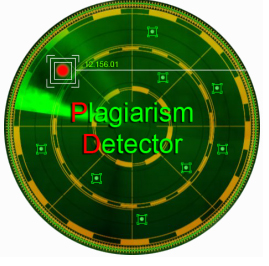ARCHETYPE ANALYSIS OF MAIN CHARACTERS IN THE SECRET GARDEN (2020) MOVIE BY FRANCES HODGSON BURNETT
Abstract
The researcher uses Jung’s archetypes theory to analyze the personality of Mary Lennox and Colin Craven as the main characters in The Secret Garden (2020) movie by Frances Hodgson Burnett. Carl Jung uses archetypes to analyze the human side of personality, which is known as a term in psychology. The researcher uses a descriptive qualitative method. The results show that the characters Mary Lennox and Colin Craven have three kinds of archetypes. These results include the shadow, persona, anima, or animus. Mary's shadow is seen when she is angry because she is ignored by Martha, misunderstood by Colin, and a liar. Meanwhile, Colin's shadow is seen when he had past trauma about the stench of roses that almost killed him, and he hated his mother because she died. Second, Mary's persona is seen as a good girl who follows the rules of the house. Meanwhile, Colin's persona was seen. He was manipulating information that he had a friend. Third, Colin reveals four characteristics of anima: touchy, moody, jealous, and unadjusted. The last, there are two characteristics of the animus revealed in Mary, such as strong and brave.
Keywords: anima, animus, persona, shadow, The Secret Garden (2020)
Full Text:
PDFReferences
Ade, O. I., & Okunoye, O. (2008). An Introduction to Literature and literary criticism.
Aisyah, Y. I. (2022). Persona And Shadow Portrayed By Maleficent In Robert Stromberg’s Maleficent Film (Doctoral dissertation, Universitas Islam Sultan Agung Semarang).
Boeree, George. (2006). Carl Jung: Personality Theories. Shippensburg: Psychology Department Shippensburg University.
Botts, A. (1999). Cavewoman Impulses: The Jungian Shadow Archetype. Romantic Conventions, 62.
Damasio, Antonio. (1999). The Feeling of What Happens. New York: Harcourt Brace & Company.
De Vries, Jan. (2009). Emotional Healing: Mengendalikan Emosi & Kecemasan. Surabaya: Selasar Surabaya Publishing.
Ekaputri, N. I. D., & Fanani, A. (2022). Persona and Shadow In Shatterday By Harlan Ellison and Fight Club By Chuck Palahniuk. JEELL (Journal of English Education, Linguistics and Literature), 8(2).
Feist, Jess., & Feist, Gregory. (2002). Theories of Personality. New York: McGraw- Hill Companies.
Feist, Jess and Gregory J. Feist. (2006). Theories of Personality, Sixth Edition. New York: The McGraw-Hill Companies, Inc.
Feist, J. and Feist, G.J. (2008) Theories of Personality. McGraw-Hill, New York, 104-111.
Fithratullah, M. (2019). Globalization and Culture Hybridity; The Commodification on Korean Music and its Successful World Expansion. Digital Press Social Sciences and Humanities, 2, 00013.
James, R. K., & Gilliland, B. E. (1995). Jungian therapy. Retrieved on May, 12, 2014.
Jess, F., & Gregory, J. F. (2006). Theories of personality. Singapore: McGraw Hill.
Jung, Carl Gustav. (1928). Two Essays on Analytical Psychology. London: Bailliere, Tindal and Cox.
Jung, Carl Gustav. (1953). Psychological Types or the Psychology of Individuation. New York: Pantheon Books.
Jung, C. G. (1959). Aion: Researches into the Phenomenology of the Self, translated by RF G. Hull. The collected works of CG Jung, 9(part 2).
Jung, C. G. (1964). Approaching the unconscious. Man and his symbols, 1-94.
Jung, Carl Gustav. (1969). The Archetypes and the Collective Unconscious. New York: Princeton University Press.
Jung, C. G., & von Franz, M. L. (1978). Man and His Symbols. London: Picador.
Jung, C. G. (1989). Memperkenalkan Psikologi Analitis. PT Gramedia.
Firdausya, M. K. (2020). The Archetype of Shadow in AJ Finn's The Woman in the Window (Doctoral dissertation, Universitas Islam Negeri Maulana Malik Ibrahim).
Gulö, I., & Rahmawelly, T. V. (2019). An analysis of omission in students’ English writings. Teknosastik, 16(2), 55-59.
Hornby, Albert Sydney. (2010). Oxford Advanced Learner’s Dictionary of Current English. Oxford: Oxford University Press.
Kuswoyo, H., & Susardi, S. 2016. Thematic progression in EFL students’ academic writings: A systemic functional grammar study. Teknosastik, 14(2), 39-45.
Lukman, A. Z. Z. M. (2022). The shadow archetype represented by Louis Creed in Stephen King’s Pet Sematary (Doctoral dissertation, Universitas Islam Negeri Maulana Malik Ibrahim).
Morissan. (2013). Psikologi Komunikasi. Bogor: Ghalia Indonesia.
Nora, S. F. (2018). Archetypes: Anchors of the Mythic Pattern. In Jungian Art Therapy (pp. 159-186). Routledge.
Pangestu, R. A., & Julianti, D. (2021). An Analysis of Archetype of Main Character Jim White in Mcfarland USA movie. Journal of English Education, 1(3), 196-202.
Perlman, H. H. (2018). Persona: Social role and personality. University of Chicago Press.
Rido, A. (2015). The use of discourse markers as an interactive feature in science lecture discourse in L2 setting. Teflin Journal, 21(1), 90-106.
Ricketts, T. C. (2000). The changing nature of rural health care. Annual review of public health, 21(1), 639-657.
Samanik, S., & Lianasari, F. (2016). Antimatter Technology: The Bridge between Science and Religion toward Universe Creation Theory Illustrated in Dan Brown’s Angels and Demons. Teknosastik, 14(2), 18-27.
Suprapto, Y. F. C. (2016). Self-Individuation Process in the Main Character of Black Swan Movie (Doctoral dissertation, Diponegoro University).
Tappolet, C., Teroni, F., & Ziv, A. K. (Eds.). (2018). Shadows of the soul: Philosophical perspectives on negative emotions. Routledge.
DOI: https://doi.org/10.33365/llj.v4i1.2646
Refbacks
- There are currently no refbacks.
Linguistics and Literature Journal
Published by Universitas Teknokrat Indonesia
Organized by Faculty of Arts and Education
Jl. Zainal Abidin Pagaralam, No.9-11, Labuhanratu, Bandarlampung, Indonesia
Telepon : 0721 70 20 22
W : http://jim.teknokrat.ac.id/index.php/linguistics_and_literature/index










